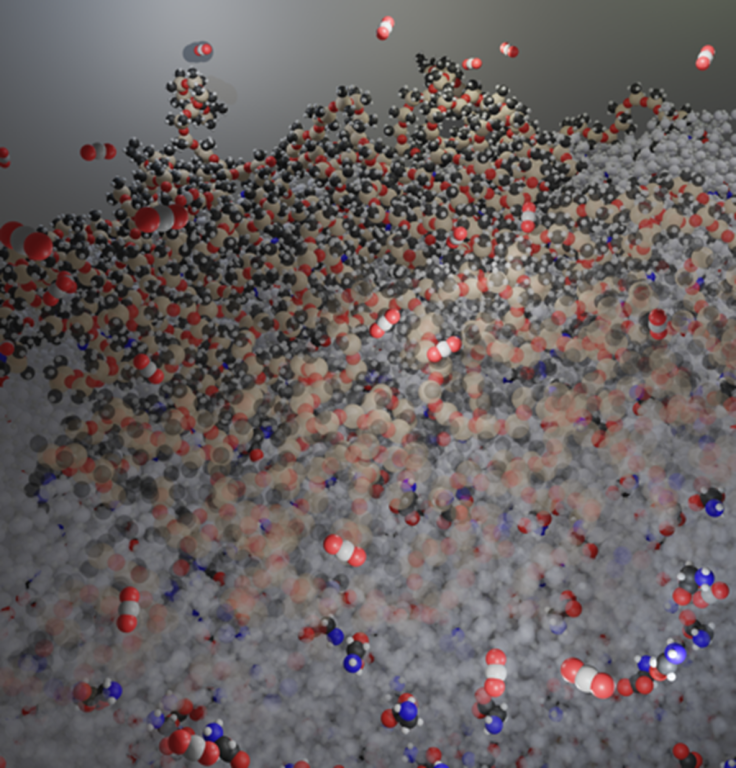Research shows improved direct air capture of CO2 using charged molecule layers

Credit: Benjamin Doughty/ORNL, U.S. Dept. of Energy
Researchers at Oak Ridge National Laboratory have demonstrated that small molecular tweaks to surfaces can improve absorption technology for direct air capture, or DAC, of carbon dioxide.
Amino acids, which react readily with CO2 and are environmentally friendly, have potential for use in liquid-based DAC. However, they aren’t naturally drawn to surfaces where they might interact with environmental CO2.
A team from ORNL added a charged polymer layer to an amino acid solution, and then, through spectroscopy and simulation, found that the charged layer can hold amino acids at its surface.
The surface-bound amino acids accelerated CO2 capture by 15%. “It’s exciting to see that such a small change to an interface can make such a huge difference,” said ORNL’s Uvinduni Premadasa.
“Once you saturate the solution, you need to regenerate the materials and interfaces,” ORNL’s Benjamin Doughty said. The researchers are now exploring energy-efficient ways to exchange surface sorbent materials. — Christy White







